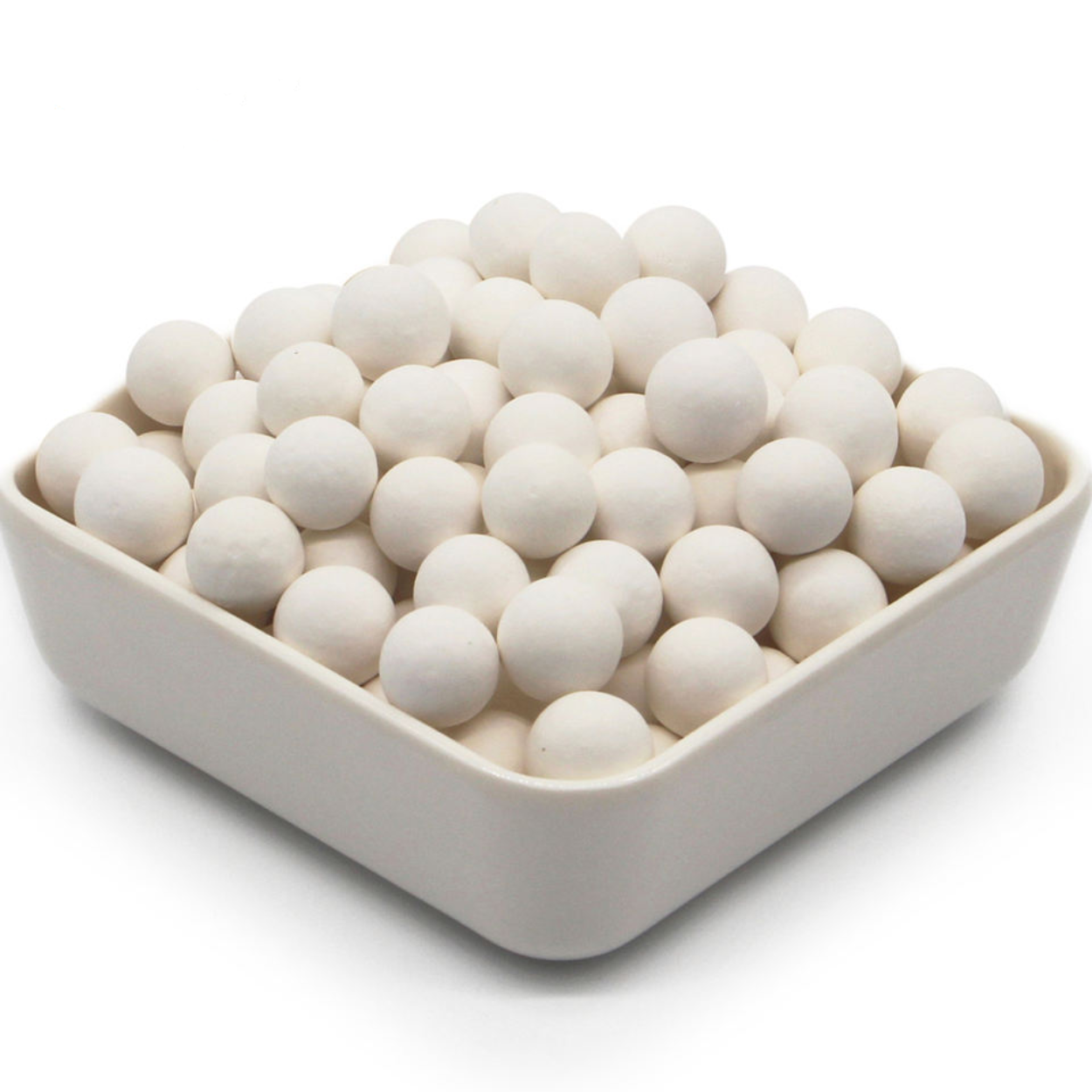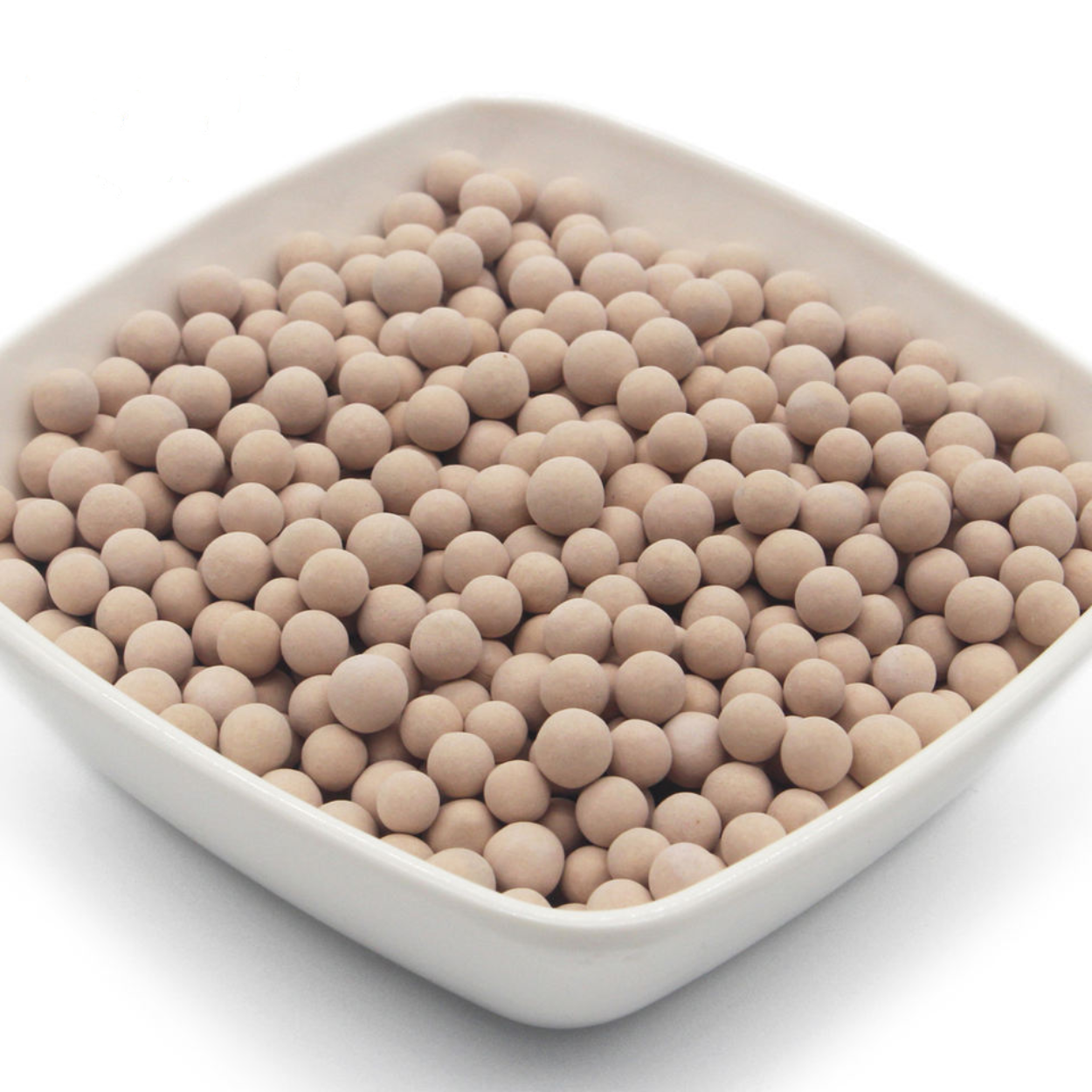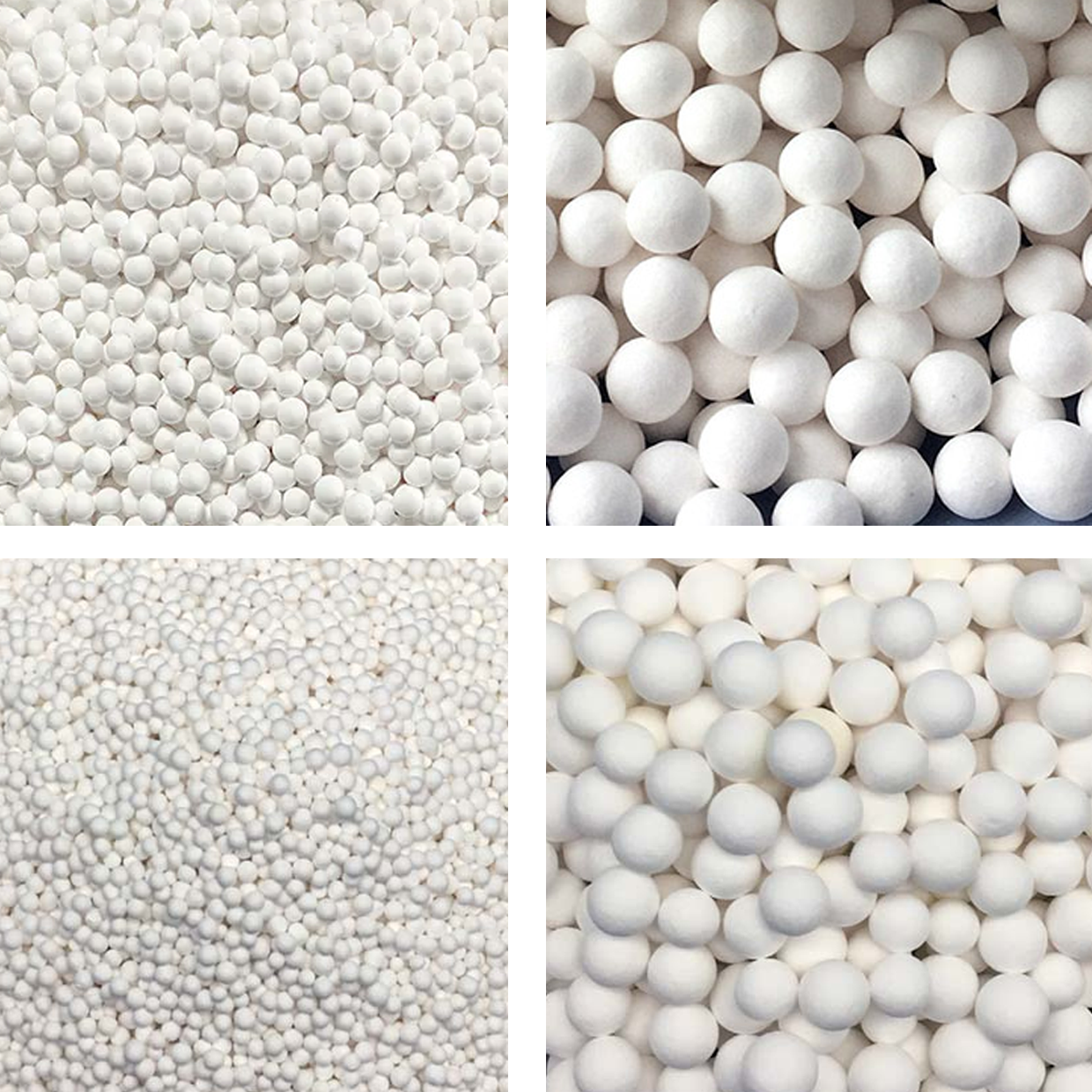
Manufacturer 4A vs 3A Molecular Sieves in LNG Dehydration
LNG dehydration mainly uses 4A molecular sieves for water and hydrocarbon removal, while 3A suits cases needing zero hydrocarbon adsorption.
In industrial gas dehydration adsorbents, molecular sieves are highly efficient adsorbents widely used for drying and purification. While 3A and 4A molecular sieves have similar names, they differ significantly in pore size, adsorption properties, and application scenarios. This article explores their technical distinctions to help you select the optimal solution for your gas drying projects.
Molecular sieves are crystalline aluminosilicates with uniform micropores. These pores allow for selective adsorption based on molecular size and polarity. In gas drying, they remove water and other impurities through precise pore channels.
The “A” in 3A and 4A refers to angstroms (Å), a unit of 0.1 nanometers. 3A has a pore size of ~3Å (0.3 nm), while 4A is ~4Å (0.4 nm), creating notable differences in performance and applications.
3A Molecular Sieve:
Pore size ~3Å. Adsorbs only small molecules like water (2.8Å) and ammonia. Ideal for precise dehydration without adsorbing valuable gases like methane or ethylene.
4A Molecular Sieve:
Pore size ~4Å. Adsorbs water, CO₂, H₂S, ethanol, and small hydrocarbons (C2–C3). Suitable for multi-contaminant removal.
3A:
Made by replacing sodium ions in 4A with potassium, narrowing the pore size. Offers better thermal stability and mechanical strength. Regeneration temperature: up to 350°C.
4A:
Sodium-type zeolite with high ion-exchange capacity. Less stable under long-term high-temp/high-humidity conditions. Max regeneration temp: ~250°C.
Water capacity: 4A slightly higher (22%) than 3A (21%).
Cost: 4A is 20–30% cheaper, as 3A requires additional ion exchange. This makes 4A more economical for large-scale use, unless selectivity is critical.
Natural Gas Deep Dehydration: Achieves dew points below -70°C; avoids co-adsorbing hydrocarbons, reducing product loss.
Olefins (Ethylene, Propylene, Butadiene): Removes water without adsorbing valuable unsaturated hydrocarbons.
Insulating Glass: Adsorbs water only—avoids pressure fluctuations that can deform glass.
Sour Gas: Low reactivity with CO₂ and H₂S; reduces COS formation risk.
General Gas Purification: Removes water, CO₂, H₂S, methanol, etc., in one step.
Air Separation Pre-Treatment: Removes moisture and CO₂ before nitrogen/oxygen generation.
Refrigeration Systems: Removes moisture and acidic impurities, protecting compressors.
Large-Scale Low-Budget Systems: Lower cost suitable for less demanding dehydration.
A gas plant used a two-layer adsorption system: a high-porosity pre-bed removed heavy hydrocarbons, while a 4A sieve layer ensured deep drying. Result: 6+ months longer service life, over $40,000/year in savings, and fewer freezing issues.
A petrochemical plant replaced 4A with 3A in its ethylene drying system. Ethylene loss dropped from 0.8% to <0.1%, increasing high-value product yield by 5,000 tons/year. Despite a 15% higher sieve cost, annual profit rose by over $3 million.
Regeneration Temperatures:
3A sieves: 280–350°C
4A sieves: 200–250°C
Avoid overheating or underheating to preserve performance.
Regeneration Gas:
Use dry natural gas or nitrogen. Flow rate should be within ±10% of design to ensure even regeneration.
Contamination Control:
For heavy hydrocarbons, use a pre-filter or pre-adsorption layer to prevent fouling.
Service Life Monitoring:
Replace or top-up molecular sieve when:
Dew point rises >10°C above design
Adsorption cycle shortens by >15%
Composite Systems: Dual-layer beds using different adsorbents for improved performance.
Ion Exchange Innovation: Enhanced control over pore sizes via K/Na tuning for new 3A variants.
Energy-Efficient Regeneration: Use of waste heat, pressure swing methods to cut energy costs.
Smart Monitoring: Online dew point sensors and AI prediction for optimal replacement timing.
Both 3A and 4A molecular sieves have distinct advantages. Your choice should consider:
Target Molecule Size & Polarity
Product Protection Requirements: Use 3A to prevent loss of valuable gases.
System Design Constraints: 3A may need larger bed volume but less regeneration energy.
Total Operating Cost: 3A’s higher price may be offset by longer life and higher product yield.
Environmental Conditions: 3A is more stable in acid gas environments.
Final Advice:
For ultra-dry applications like natural gas (<-70°C dew point), petrochemical gas drying, and insulating glass, 3A is the superior choice. For general-purpose drying or cost-sensitive projects requiring removal of multiple impurities, 4A offers better versatility and value. Consult a professional supplier to simulate performance under your specific conditions and design the most cost-effective solution.

LNG dehydration mainly uses 4A molecular sieves for water and hydrocarbon removal, while 3A suits cases needing zero hydrocarbon adsorption.

Achieve ultra-deep dehydration of cracked gas with 3A molecular sieves—remove water without ethylene/propylene loss, ensuring catalyst life and product purity.

Home Desiccant Activated Alumina for air compressor drying gas purification wholesale Email WhatsApp Product Inroduction: Desiccant Activated Alumina for air

Home Adsorbent Zeolite 13x Molecular Sieve for Removing Odor From LPG in air Freshener Plant Email WhatsApp Product Inroduction: Adsorbent Zeolite
As a leading molecular sieve manufacturer, we share the latest industry news and insights on adsorbents like molecular sieves, sieve powder, and activated alumina.

Achieve ultra-deep dehydration of cracked gas with 3A molecular sieves—remove water without ethylene/propylene loss, ensuring catalyst life and product purity.

3 proven regeneration techniques to extend molecular sieve desiccants lifespan, reduce costs, and ensure stable performance in air separation and gas processing.

Activated alumina for compressed air drying: achieves -50°C dew point, low energy use, and long service life in industrial applications.